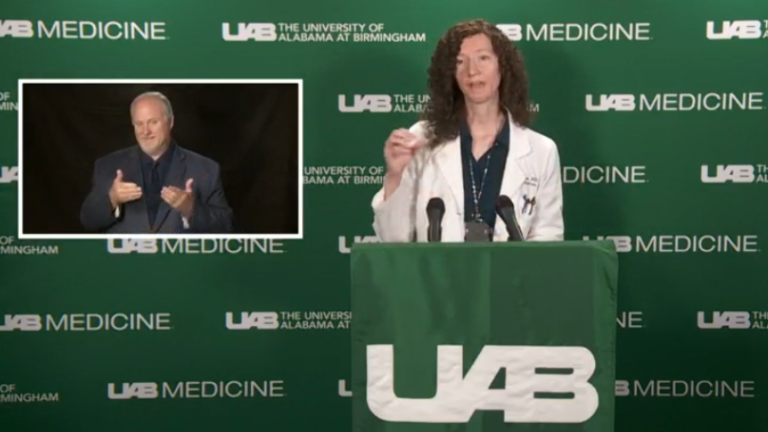By Virginia Martin
UAB officials are starting to look toward the day when the number of COVID-19 cases starts to decline in Alabama, but there are no easy answers to what could come next.
The most-watched model of coronavirus spread now predicts Alabama will hit its peak April 21, a week from Tuesday, though that date has varied over time. Government and public health officials are watching the numbers to determine when the state can begin the process of getting back to ‘normal.’
When cases do start to drop, those officials will be determining whether they can reopen businesses but require they maintain social distancing, for instance, Dr. Rachel Lee, UAB Hospital epidemiologist, said in a briefing Monday. Lee said people even after restrictions are lightened may have to continue some socially distancing if they want to stay healthy. They may have to cut back on hugging and shaking hands to thwart the coronavirus spread, she said.
When movement restrictions are lightened, UAB professionals also will be getting ready for either a slow, steady stream of COVID-19 patients or a potential surge of patients. They are planning for the possibility of having to bring COVID-19 operations back to full speed, if needed, Lee said.
A decline in the disease does not mean it has gone away; previous pandemics have proved that, she said. The infamous 1918 flu pandemic lasted through early 1919, for instance. China recently had a decline in cases and started to let up on travel restrictions, but now the country is continuing to see cases, Lee said.
“So when we reopen, we will have to be careful,” she said in a briefing today. “As we loosen some of our physical distancing we may see some of our cases going forward, but that’s where (we) as a society has to be very careful about how physically distant we are and, you know, do we need to truly do travel to one place or the other or going to a large event that has a lot of people there. So that’s what I think we need to think through as a society.
Lee said the best way to track activity so health care professionals can respond quickly is to test consistently and over a significant portion of the population, but that might not be possible.
How Bad Is It?
Lee said there have been about 1.8 million cases of COVID-19 globally and more than 100,000 deaths. The U.S. has had about 560,000 cases with more than 22,000 deaths.
In Alabama, there had been 3,734 cases confirmed Monday afternoon and 99 reported deaths. Statewide, 457 people have been hospitalized since the epidemic began here. UAB admitted more than 150 of those patients, Lee said, but now it is down to 38 patients who are actively battling COVI-19. Another 50 or so patients who are no longer testing positive for COVID-19 still are being treated at UAB for lung damage, she said.
But you can’t tell whether the virus is waning or gearing up from one set of numbers.
Lee said that, in Jefferson County, the number of cases is doubling about every 13 days. Moblie Ccounty’s case count is doubling every 3.5 days, potentially painting two different pictures of where we are in the process.
Lee thinks actions the Jefferson County Health Department and the city of Birmingham took early to implement social distancing may have helped bring down the number of sick people.
But some smaller counties also had rules in place and now are seeing more cases per capita.
Jefferson County had good testing capability, she said, but she’s not sure how many tests have been given in smaller counties. Barriers such as these make it harder to determine what the coronavirus is doing in the community and what it could do next.

